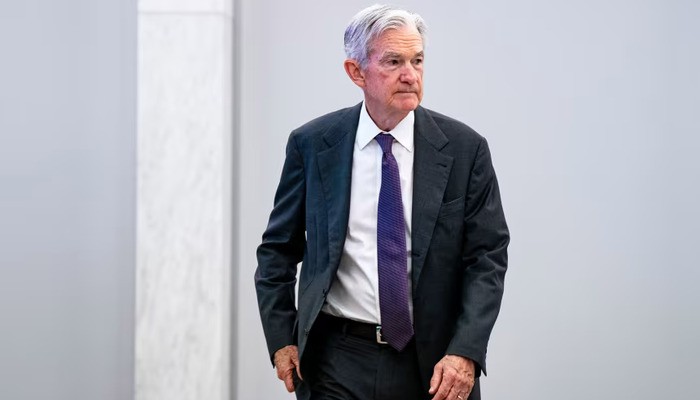The Federal Reserve interest rate cuts debate took center stage on Friday when Chair Jerome Powell hinted that changing conditions may warrant a shift in policy. Speaking at the annual Jackson Hole symposium, Powell acknowledged rising uncertainty in the economy and stressed the need to proceed carefully. His remarks fueled expectations of potential cuts ahead, even as he highlighted risks that could complicate the Fed’s path.
Uncertainty clouds economic outlook
Powell admitted that policymakers face a complex environment shaped by shifts in trade, tax, and immigration policies. These sweeping changes, he said, are altering the balance between the Fed’s dual mandate: ensuring stable prices and maintaining strong employment.
While the labor market remains resilient, Powell noted that risks are increasing. He warned that tariffs could reignite inflationary pressures, raising the threat of stagflation — a combination of slowing growth and rising prices that the Fed seeks to avoid.
Policy remains restrictive
The Fed’s benchmark rate currently stands between 4.25% and 4.5%, one percentage point below last year’s level at the same event. Powell emphasized that policy remains in restrictive territory. That gives the central bank room to act cautiously while assessing the impact of tariffs and global uncertainty.
“With policy in restrictive territory, the baseline outlook and the shifting balance of risks may warrant adjusting our policy stance,” Powell said. This carefully chosen language suggested that cuts could be on the table, though not yet guaranteed.
Read: UN Declares Full-Blown Famine in Gaza Despite Israeli Denials
Market reaction swift
Financial markets responded instantly to Powell’s tone. The Dow Jones Industrial Average surged more than 600 points after his remarks, while yields on the policy-sensitive two-year Treasury note fell to 3.71%.
Investors read Powell’s comments as a signal that the Federal Open Market Committee (FOMC) could lower rates when it meets on September 16-17. Though Powell stopped short of promising action, his words strengthened Wall Street’s conviction that easing is near.
White House pressure in the background
President Donald Trump has repeatedly demanded sharp rate cuts, criticizing Powell and the Fed for being too cautious. While Powell did not directly address those calls, he stressed the importance of independence.
“FOMC members will make these decisions solely on their assessment of the data and its implications for the economic outlook and the balance of risks. We will never deviate from that approach,” he said.
By reaffirming independence, Powell sought to reassure markets and the public that policy will not bend to political pressure.
Tariffs complicate the picture
Powell highlighted tariffs as a major source of uncertainty. While the Trump administration argues that tariffs will not trigger lasting inflation, Powell said the outcome remains unclear. He acknowledged that a “reasonable base case” is for tariff impacts to be short-lived. Still, he warned that evolving tariff rates could prolong disruptions across supply chains.
“It will continue to take time for tariff increases to work their way through supply chains and distribution networks,” he said.
Lessons from past mistakes
The speech also revisited the Fed’s five-year review of its policy framework. In 2020, during the pandemic, the Fed adopted “flexible average inflation targeting.” This allowed inflation to run slightly above 2% to support job growth.
But the strategy backfired. Inflation soon surged to 40-year highs, far above the Fed’s comfort zone. Powell admitted that the central bank underestimated the problem.
“As it turned out, the idea of an intentional, moderate inflation overshoot had proved irrelevant. There was nothing intentional or moderate about the inflation that arrived,” he said. The experience, he added, was a painful reminder of the burden high inflation places on households, especially low-income families.
Reaffirming the 2% goal
Despite criticism from some economists, Powell confirmed that the Fed will keep its 2% inflation target. Some argue the target is too high and undermines the dollar, while others say flexibility is needed. Powell defended the target, saying it anchors long-term inflation expectations and supports stability.
“We believe that our commitment to this target is a key factor helping keep longer-term inflation expectations well anchored,” he said.
What lies ahead
Powell’s remarks underline the Fed’s cautious approach. While economic resilience gives room to act, risks from tariffs, global uncertainty, and shifting demand remain. The message was clear: the Fed is open to adjusting policy, but it will do so based only on data, not political pressure.
For markets, Powell’s words were enough to fuel optimism. For policymakers, they marked another step in navigating a delicate balance between growth and inflation. The Federal Reserve interest rate cuts may not be immediate, but conditions are building for a possible shift in the months ahead.
Follow us on Instagram, YouTube, Facebook,, X and TikTok for latest updates
